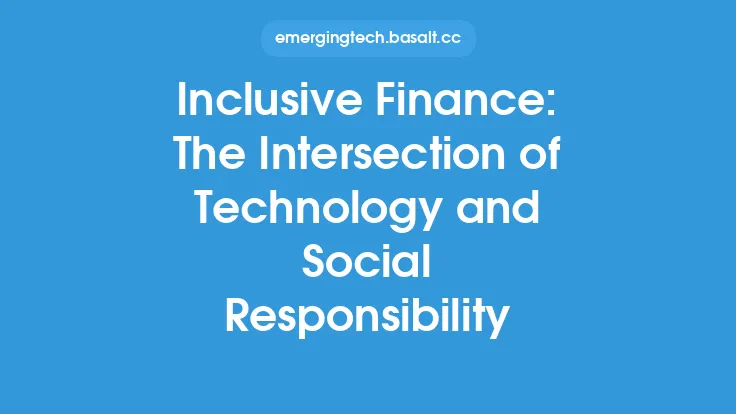The rapid advancement of immersive technologies, including Virtual Reality (VR), Augmented Reality (AR), and Mixed Reality (MR), has been transforming the way we interact with digital information. At the same time, Artificial Intelligence (AI) has been making tremendous progress in recent years, enabling machines to learn, reason, and interact with humans in more sophisticated ways. The intersection of these two technologies is giving rise to exciting new opportunities, enabling the creation of more realistic, interactive, and personalized immersive experiences.
Introduction to Immersive Technologies
Immersive technologies are designed to simulate a three-dimensional environment that surrounds the user, shutting out the physical world and creating a sense of presence and immersion. VR, AR, and MR are the three main types of immersive technologies. VR creates a completely virtual environment, shutting out the physical world, while AR overlays digital information onto the real world. MR, on the other hand, combines elements of both VR and AR, allowing users to interact with both virtual and real-world objects. These technologies have been gaining traction in various fields, including gaming, education, healthcare, and entertainment.
Artificial Intelligence and Machine Learning
AI refers to the development of computer systems that can perform tasks that typically require human intelligence, such as learning, problem-solving, and decision-making. Machine Learning (ML) is a subset of AI that involves the use of algorithms and statistical models to enable machines to learn from data, without being explicitly programmed. Deep Learning (DL) is a type of ML that uses neural networks to analyze data, inspired by the structure and function of the human brain. AI and ML have been widely adopted in various industries, including healthcare, finance, and transportation, and are now being applied to immersive technologies to create more sophisticated and interactive experiences.
The Intersection of Immersive Technologies and AI
The combination of immersive technologies and AI is enabling the creation of more realistic, interactive, and personalized experiences. AI can be used to generate realistic virtual environments, characters, and objects, while ML can be used to analyze user behavior and adapt the experience to their needs and preferences. For example, AI-powered chatbots can be used to create interactive virtual characters that can engage with users in a more natural and intuitive way. Additionally, ML can be used to analyze user data and provide personalized recommendations, such as suggesting virtual objects or environments that are likely to be of interest to the user.
Technical Aspects of Immersive Technologies and AI
From a technical perspective, the integration of immersive technologies and AI requires the use of various tools and technologies, including game engines, 3D modeling software, and AI frameworks. Game engines, such as Unity and Unreal Engine, provide a platform for creating immersive experiences, while 3D modeling software, such as Blender and Maya, can be used to create realistic virtual objects and environments. AI frameworks, such as TensorFlow and PyTorch, provide a platform for building and deploying AI models, including ML and DL models. Additionally, various programming languages, including C++, Java, and Python, are used to develop immersive experiences and integrate AI functionality.
Applications of Immersive Technologies and AI
The intersection of immersive technologies and AI has a wide range of applications, including gaming, education, healthcare, and entertainment. In gaming, AI can be used to create more realistic and interactive virtual environments, while ML can be used to analyze user behavior and adapt the game to their needs and preferences. In education, immersive technologies and AI can be used to create interactive and personalized learning experiences, such as virtual labs and simulations. In healthcare, immersive technologies and AI can be used to create virtual reality therapy environments, such as exposure therapy for anxiety disorders. In entertainment, immersive technologies and AI can be used to create interactive and immersive experiences, such as virtual concerts and movies.
Future Directions and Challenges
The intersection of immersive technologies and AI is a rapidly evolving field, with new technologies and applications emerging all the time. However, there are also several challenges that need to be addressed, including the need for more advanced AI models, more realistic virtual environments, and more sophisticated user interfaces. Additionally, there are concerns about the potential impact of immersive technologies and AI on society, including the potential for addiction, social isolation, and job displacement. To address these challenges, researchers and developers are working on creating more advanced AI models, more realistic virtual environments, and more sophisticated user interfaces, while also exploring the potential social and ethical implications of these technologies.
Conclusion
The intersection of immersive technologies and AI is a rapidly evolving field, with a wide range of applications and opportunities. By combining the capabilities of immersive technologies and AI, developers can create more realistic, interactive, and personalized experiences that have the potential to transform various industries, including gaming, education, healthcare, and entertainment. While there are several challenges that need to be addressed, the potential benefits of these technologies make them an exciting and important area of research and development. As these technologies continue to evolve, we can expect to see new and innovative applications emerge, enabling us to interact with digital information in more sophisticated and intuitive ways.





